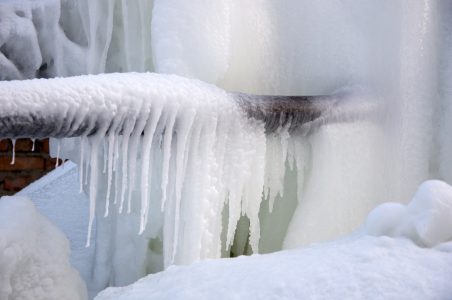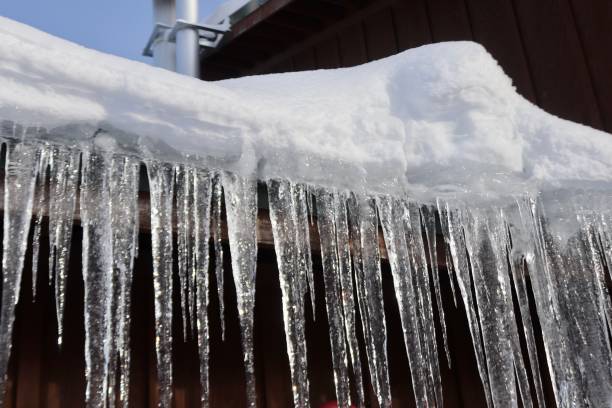Tips to Avoid Frozen Pipes in Cold Weather: Expert Guidance
Tips to Avoid Frozen Pipes in Cold Weather: Expert Guidance
Blog Article
Here further down you can locate more dependable expertise regarding Preventing and dealing with frozen pipes.

Winter can ruin your pipes, especially by freezing pipes. Here's how to prevent it from taking place and what to do if it does.
Intro
As temperatures drop, the threat of icy pipes rises, possibly resulting in costly fixings and water damage. Understanding just how to prevent frozen pipelines is important for property owners in cold environments.
Recognizing Icy Pipelines
What triggers pipelines to ice up?
Pipelines ice up when revealed to temperature levels below 32 ° F (0 ° C) for expanded durations. As water inside the pipes ices up, it expands, taxing the pipe wall surfaces and possibly causing them to rupture.
Risks and problems
Icy pipes can bring about water interruptions, home damages, and costly repairs. Burst pipes can flooding homes and cause comprehensive architectural damages.
Signs of Frozen Water Lines
Recognizing icy pipelines early can stop them from breaking.
Just how to identify icy pipelines
Seek lowered water circulation from taps, uncommon odors or noises from pipes, and visible frost on exposed pipelines.
Avoidance Tips
Protecting prone pipes
Cover pipelines in insulation sleeves or utilize warm tape to safeguard them from freezing temperature levels. Focus on pipelines in unheated or outside areas of the home.
Home heating strategies
Maintain indoor rooms effectively heated up, particularly locations with pipes. Open closet doors to allow warm air to distribute around pipes under sinks.
Shielding Outdoor Plumbing
Yard hoses and outdoor faucets
Detach and drain pipes yard tubes prior to winter. Install frost-proof spigots or cover outdoor faucets with protected caps.
What to Do If Your Pipelines Freeze
Immediate activities to take
If you believe icy pipelines, maintain faucets available to eliminate stress as the ice thaws. Make use of a hairdryer or towels soaked in hot water to thaw pipelines gradually.
Long-Term Solutions
Architectural modifications
Take into consideration rerouting pipelines far from outside walls or unheated locations. Add additional insulation to attics, cellars, and crawl spaces.
Updating insulation
Invest in premium insulation for pipes, attics, and wall surfaces. Appropriate insulation assists maintain constant temperatures and reduces the danger of icy pipes.
Verdict
Avoiding icy pipes needs proactive procedures and quick reactions. By understanding the reasons, indications, and preventive measures, home owners can secure their pipes during winter.
5 Ways to Prevent Frozen Pipes
Drain Outdoor Faucets and Disconnect Hoses
First, close the shut-off valve that controls the flow of water in the pipe to your outdoor faucet. Then, head outside to disconnect and drain your hose and open the outdoor faucet to allow the water to completely drain out of the line. Turn off the faucet when done. Finally, head back to the shut-off valve and drain the remaining water inside the pipe into a bucket or container. Additionally, if you have a home irrigation system, you should consider hiring an expert to clear the system of water each year.
Insulate Pipes
One of the best and most cost-effective methods for preventing frozen water pipes is to wrap your pipes with insulation. This is especially important for areas in your home that aren’t exposed to heat, such as an attic. We suggest using foam sleeves, which can typically be found at your local hardware store.
Keep Heat Running at 65
Your pipes are located inside your walls, and the temperature there is much colder than the rest of the house. To prevent your pipes from freezing, The Insurance Information Institute suggests that you keep your home heated to at least 65 degrees, even when traveling. You may want to invest in smart devices that can keep an eye on the temperature in your home while you’re away.
Leave Water Dripping
Moving water — even a small trickle — can prevent ice from forming inside your pipes. When freezing temps are imminent, start a drip of water from all faucets that serve exposed pipes. Leaving a few faucets running will also help relieve pressure inside the pipes and help prevent a rupture if the water inside freezes.
Open Cupboard Doors
Warm your kitchen and bathroom pipes by opening cupboards and vanities. You should also leave your interior doors ajar to help warm air circulate evenly throughout your home.

I was introduced to that write-up on 6 Ways to Prevent Frozen Pipes from an acquaintance on another site. Are you aware of somebody else who is enthusiastic about the subject? Why not share it. Thanks a lot for your time invested reading it.
Book Report this page